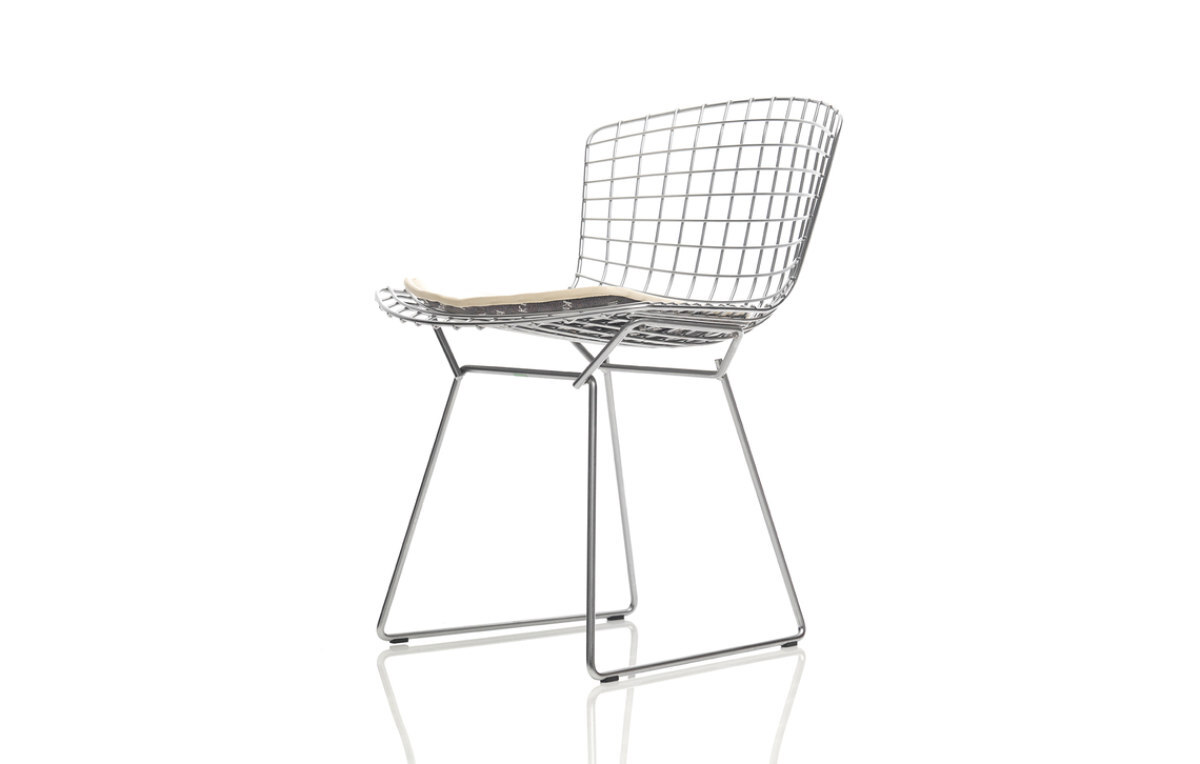Side chair by Bertoia
General info
In the 1950s when most chairs were made of rigid wood, the Bertoia line of furniture - with welded wire and a springy feel - were totally innovative. Knoll International produced the first Bertoia chairs in 1952 and is still producing them today.
Bertoia was exposed to chairs at Cranbrook when Eero Saarinen and Charles Eames entered and won the Organic Furniture Design Competition sponsored by the Museum of Modern Art. Bertoia developed his initial chair design ideas while working with Charles Eames and others in California in the late 1940s. Bertoia was extremely instrumental in achieving the flexible plywood seat with tubular frame that eventually became the Eames chair. It was known only as the Eames chair and there was no mention of Bertoia or the other co-workers.
Bertoia, frustrated by the lack of recognition, left Eames and was summoned to join the Point Loma Naval Electronics Laboratory. Part of his work at the lab was to scrutinize the human body and chart how to design equipment such as control panels and knobs with respect to comfort of the human reach and grip. He found this study of body dynamics (today we might call it ergonomics) fascinating and it contributed to knowledge used later in designing well-fitting practical chairs.
When former Cranbrook classmate Florence Schust Knoll invited Bertoia to work with her and her husband Hans in Pennsylvania, Bertoia was tempted but indecisive. Luckily Brigitta, his impulsive wife, answered a resounding “yes” for him and thus changed their lives forever. They moved to Pennsylvania and set up shop under the auspices of Knoll. Bertoia was promised, and indeed received, complete credit for all designs he created with Knoll.
They first intended for Bertoia to develop hospital furniture, but he preferred to work with healthy bodies. Metal was the material of choice, and Bertoia played with it until arising at the wire grid concept that could be shaped at will. He not only created the airy design of the chairs, but also devised the production molds used for mass manufacture. Knoll paid him for his time plus a handsome lump sum, leaving the chair rights permanently with Knoll. This large payment allowed Bertoia to purchase the Pennsylvania farmhouse and metal shop in which he stayed until his death in 1978.
The chairs we sell
The chairs and leather cushions show some very light wear, and are in overall very good condition.
